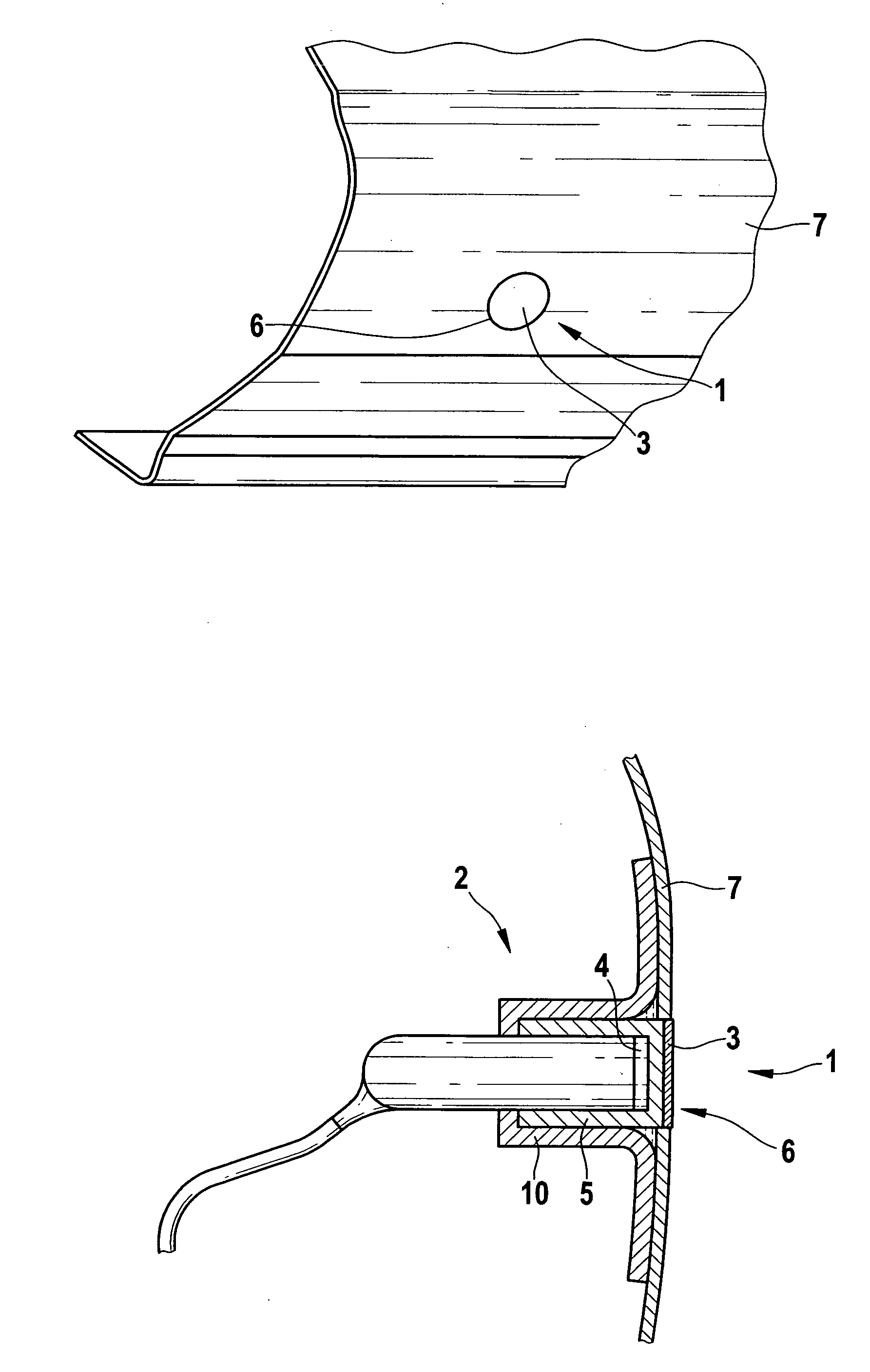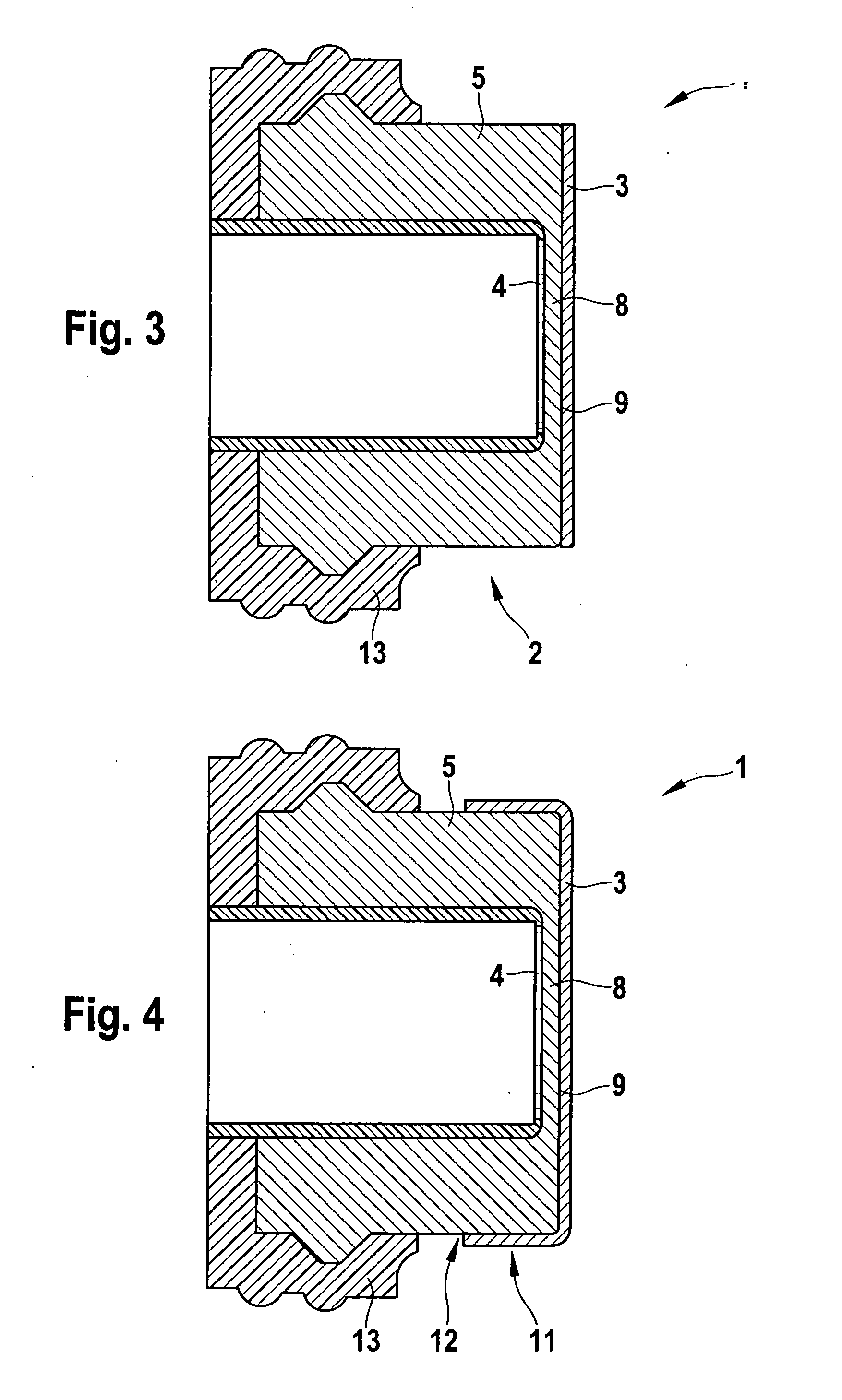Sensor device for vehicles
a technology for sensors and vehicles, applied in the direction of instruments, specific gravity measurement, furnaces, etc., can solve the problems of large size, large signal characteristic of ultrasonic sensors to vary to different and undetectable extents, and achieve minimal detuning, excellent visual adaptation, and optimal functioning of ultrasonic sensors
- Summary
- Abstract
- Description
- Claims
- Application Information
AI Technical Summary
Benefits of technology
Problems solved by technology
Method used
Image
Examples
Embodiment Construction
[0028] Sensor device 1 shown in the figures is essentially made up of an ultrasonic sensor 2 and a sensor cover 3 which is bonded thereto and formed by a chrome foil. Ultrasonic sensor 2 itself includes an oscillatory sensor element 4 in the form of a sensor diaphragm, for instance, which is supported inside a cup-shaped housing 5 of ultrasonic sensor 2.
[0029] Ultrasonic sensor 2 is accommodated in a bore hole 6 of an external vehicle component 7 in the form of a shock absorber, in such a way that front end wall 8 of housing 5 having a thickness of approximately 0.6 mm is situated completely inside bore hole 5. The outside surface of end face 9 of housing 5 is flush with the opening cross section of bore hole 6.
[0030] The chrome foil as sensor cover 3 is bonded directly to end face 9. Its form and size are adapted to end face 9. In particular, chrome foil 3 thus does not project beyond the opening cross section formed by bore hole 6 and completely covers ultrasonic sensor 2 on the...
PUM
 Login to View More
Login to View More Abstract
Description
Claims
Application Information
 Login to View More
Login to View More - R&D
- Intellectual Property
- Life Sciences
- Materials
- Tech Scout
- Unparalleled Data Quality
- Higher Quality Content
- 60% Fewer Hallucinations
Browse by: Latest US Patents, China's latest patents, Technical Efficacy Thesaurus, Application Domain, Technology Topic, Popular Technical Reports.
© 2025 PatSnap. All rights reserved.Legal|Privacy policy|Modern Slavery Act Transparency Statement|Sitemap|About US| Contact US: help@patsnap.com



